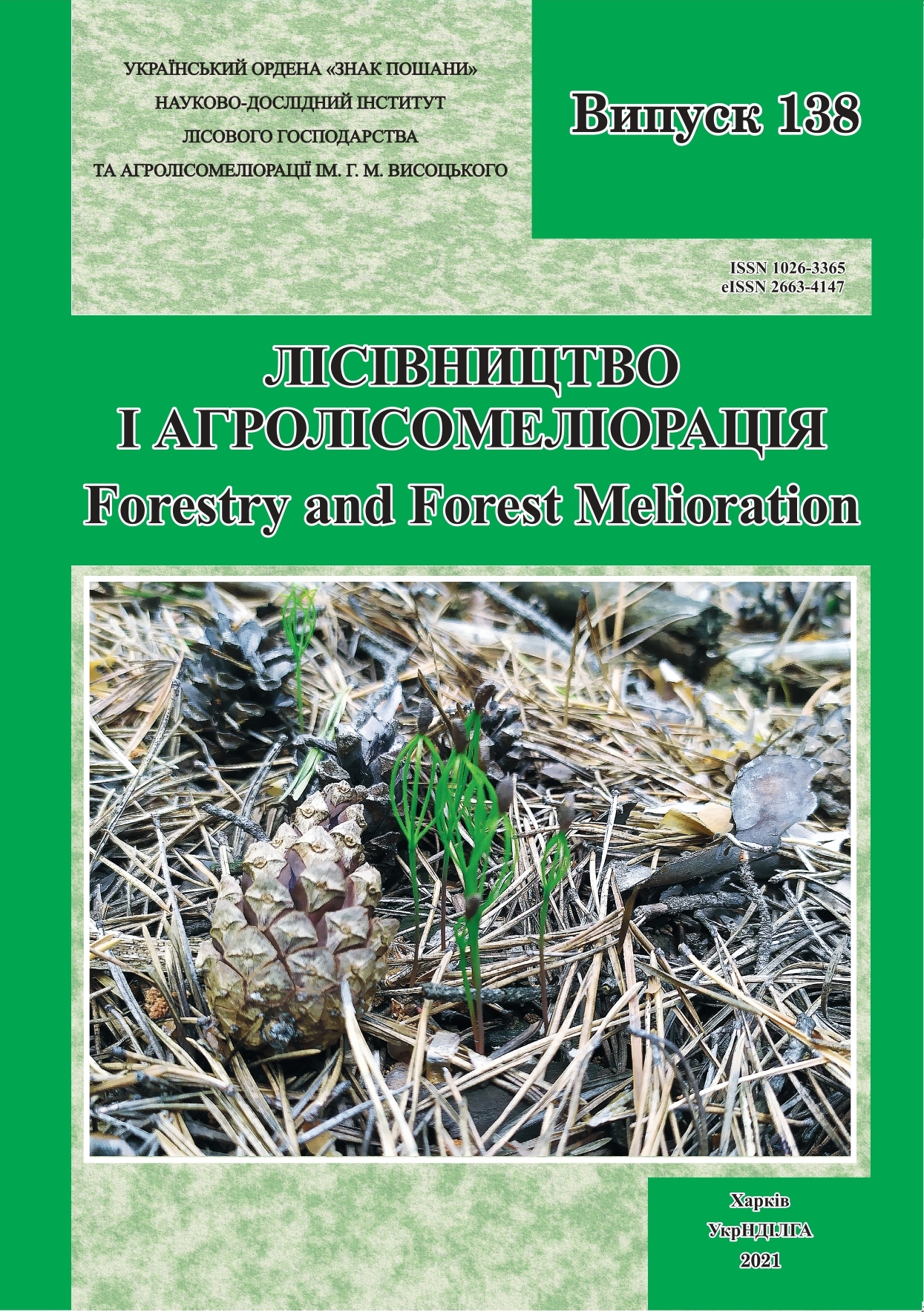Анотація
У статті проаналізовано динаміку природних процесів у лісових генетичних резерватах (ЛГР) державних підприємств Полтавського обласного управління лісового та мисливського господарства за авторською методикою комплексного оцінювання з використанням матеріалів лісовпорядкування. Лісівничі показники на час відведення генетичних резерватів порівнювали із сучасними таксаційними показниками ЛГР та оцінили за баловою шкалою. Визначено різницю суми балів двох періодів. Серед 13 обстежених лісових генетичних резерватів у трьох відзначено позитивну динаміку природних процесів, у семи – змін не відбулося, ще в трьох ЛГР помічено незначні негативні зміни. Загалом відзначено позитивну динаміку функціонування ЛГР дуба звичайного, нейтральну – вільхи чорної та зниження показників ЛГР сосни звичайної. Визначено можливості застосування запропонованої методики у подальшій практичній роботі.

Ця робота ліцензується відповідно до Creative Commons Attribution 4.0 International License.
